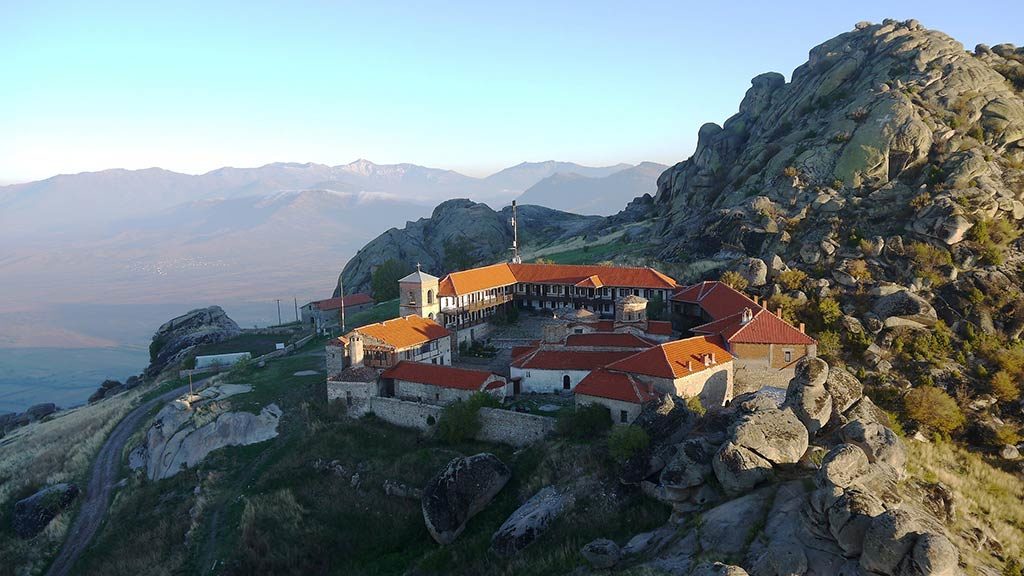The rise of the great Macedonian kingdom began in the fourth century BC when both Athens and Sparta had passed their zenith and had exhausted themselves with 30 years fighting against each other. The Greeks regarded the Macedonians as “barbarians”, i.e. people who could not speak proper Greek, and looked down on them accordingly. Nevertheless, by using a mixture of brilliant diplomacy and armed force, Philip II and his son, Alexander the Great, brought the whole of Greece under the control of Macedon.
One secret of their success was the adoption by Philip of the “phalanx”, a squad of heavily-armed soldiers carrying strong pikes of different lengths and constituting, in effect, a sort of human tank. At the same time, the Macedonians perfected the employment of lightly armed troops and cavalry, who could easily outmaneuver military formations of the time. Once all Greece had been brought under Macedonian control, Alexander, universally considered one of greatest military geniuses of all time, then set out upon his extraordinary conquest of the known world. First he took Asia Minor, then the mighty Persian Empire of Darius. Pressing ever eastward, he next subdued Babylon and continued to the Punjab in India before his homesick troops finally compelled him, much against his will, to turn back. He himself died at the age of 33 without ever seeing his native country again. The generals whom he had left in charge of various provinces seized control for themselves and began to quarrel with each other. After 175 unsettled years, in 146 BC Macedonia became a Roman province.
Centuries later, Byzantium tried to check the Slav’s infiltration from the north, but was unable to prevent their settling there, and in the tenth century the newcomers formed themselves into an independent state under Car Samuel (Tsar Samuel). After several victories over the Byzantines, he added other Slav provinces to his kingdom, whose central portion was what is now Bulgaria. But Byzantium, once fully mobilized, was too powerful for him.
In a terrible battle in 1014, the Byzantine Emperor, Basil II, took 14,000 prisoners blinded them and sent them back to Samuel. Stunned by the horror of this monstrous act, Samuel died soon after, and for a time Byzantine power was assured.
With the expansion of the Serb state under the brilliant Nemanja dynasty, King Dusan occupied Macedonia in the 14th century, but this unification of the two Slav countries was not fully achieved before the Turks made themselves masters of both, staying there for 500 years. It was a period punctuated by rebellion and especially the activities of ‘hajduk’, who formed themselves into bands of outlaws of freedom fighters. But for most of the population it was a period of hardship and hopelessness in which the flame of Macedonian culture was kept flickering only in the monastic centers.
Following the growth of nationalistic sentiment in Serbia early in the 19th century, Macedonia began to hope that her long subjection was nearly ended, but her case aroused little support abroad. Her attempts at a national uprising, such as that of Krusevo, organized by the Macedonian revolutionary movement known as “VMRO”, were mercilessly suppressed. In 1909 there was a state of open warfare for three months, but the insurgents, poorly armed and led, were beaten.
The first Balkan War (1912) liberated Macedonia from the Turks, but the Greeks, Bulgarians and Serbs immediately embarked upon the second Balkan War of 1913. In World War I this unhappy backward province was a theater of operations. The Treaty of Neuilly in 1919 again divided it, the new Yugoslavia being awarded the lion’s share, Greece keeping Thessaloniki and its environs, and Bulgaria a small strip in the northeast. In 1941 the Germans presented most of Macedonia to Bulgaria, but the 1919 frontiers were restored in 1945. While the province was probably better-off in the period between the two world wars than she had been under the Turks, the kingdom of Yugoslavia was particularly active in its efforts to bring the region up to date and repair the damage of its long neglect.
However, after World War II, schools were opened for the first time. In them instruction is given in the Macedonia language, which is in many ways different from Serbo-Croat. Macedonia is still in some respect more backward than the northern region of Yugoslavia, but industrialization is going ahead fast, agriculture has been drastically reorganized, and excellent new roads have been built. There remains much to do, but it is significant now that the people are at last free of foreign rule, and painters, musicians and writers are very actively asserting the country’s highly individual artistic outlook.

Virtual Macedonia
Republic of Macedonia Home Page
Here at Virtual Macedonia, we love everything about our country, Republic of Macedonia. We focus on topics relating to travel to Macedonia, Macedonian history, Macedonian Language, Macedonian Culture. Our goal is to help people learn more about the "Jewel of the Balkans- Macedonia" - See more at our About Us page.
Leave a comment || Signup for email || Facebook |
History || Culture || Travel || Politics















